Heavy Use Area Feeding Design Runoff Pdf
Runoff quality from the feedlot surface is important when adapting best management practices for minimizing environmental concerns, especially surface water and ground water pollution. Feedlot runoff can end up in surface water streams, which may be detrimental to fish and aquatic life and may cause eutrophication (a process by which a water body becomes abundant in plant nutrients and low in oxygen).
Runoff is likely to occur from open feedlot pen surfaces when rainfall or snowmelt occurs. A rainfall event following land application of manure, overapplying manure or misapplying manure also may cause runoff. The focus of this publication is to discuss feedlot runoff quality.
Various criteria have been developed to characterize water quality, including physical characteristics, chemical constituents and bacterial content. Water quality criteria are set to protect water for humans and aquatic life.
Runoff from a feedlot may transport large quantities of organic matter, nutrients and pathogens. If feedlots are not managed properly, uncontrolled runoff from beef cattle feedlot pens may pollute public waters, thus may pose a risk to aquatic life, as well as recreational and drinking water.
The Clean Water Act requires management practices to control runoff from feedlots. Runoff is a significant transport mechanism for water-soluble pollutants (nitrate, nitrite, ortho-phosphate).
Excess amounts of nitrogen in water may cause depletion of oxygen in the water and may affect aquatic life and organisms. Nitrogen has different forms, but total nitrogen (TN), ammonium nitrogen (NH4-N), organic nitrogen, nitrite (NO2-) and nitrate (NO3-) are concerns in runoff.
Total nitrogen is the sum of total Kjeldahl nitrogen (TKN), ammonia and nitrate-nitrite. Nitrate and ammonium are highly soluble and readily transfer with runoff and may end up in the water stream. Nitrate can leach into ground water and may pose ground water contamination. By implementing nutrient management practices, nutrient loss in runoff may be reduced.
Similarly, phosphorus (P) is an essential nutrient for plants and animals. Phosphorus in runoff may be present as dissolved reactive phosphorus or orthophosphate (ortho-P) and may cause eutrophication or other water quality problems. Eutrophication is caused by excessive amounts of phosphorus and nitrogen in a water body, causing algae problems.
Runoff from feedlot pen surfaces must be controlled and prevented from entering surface and ground waters. Runoff management practices may include settling basins or vegetative filter systems to reduce solid and nutrient loads.
Knowledge of runoff quality from beef cattle feedlot pens would be useful to design effective management practices to protect water quality. This publication is intended to share runoff quality measurements from three beef cattle feedlot pen surfaces under North Dakota management and climatic conditions.
Runoff Sample Collection, Analysis and Reporting
Runoff samples can be collected manually (grab samples) or by using an automatic sampler (ISCO automatic sampler or other automatic device) after a rainfall event. For automatic sampling, runoff may be collected in a bucket and sampling occurs from there. Samples may be collected at various times throughout the year to have a better understanding of nutrient concentrations in runoff.
Samples can be sent immediately in a cooler after collection to any water quality analysis laboratory for nutrients, pH and conductivity analysis. Otherwise, it can be frozen at minus 4 C (25 F) and shipped later for analysis. Keep in mind that you should minimize the time between collection and analysis. A list of water quality laboratories may be found in publication WQ1341, "Drinking Water Quality: Testing and Interpreting Your Results."
Generally, various forms of nitrogen (TKN, ammonium, nitrite-NO2- and nitrate NO3-), various forms of phosphorus (total phosphorus, ortho-P) and potassium are of most interest in runoff. Additionally, total solids (TS) and total suspended solids (TSS) also may be analyzed. In most cases, laboratories will report results in percentages, parts per million (ppm), milligrams per liter (mg/L) or milligrams per kilogram (mg/kg).
1% = 10,000 ppm
1 ppm = 1 mg/L
North Dakota Case Studies
Runoff samples from three existing feedlot pen surfaces (hereafter Feedlot S, Feedlot R and Feedlot C in Sargent County, Richland County and Cass County, respectively) were collected immediately downstream from the pen surfaces. Study locations are presented in Figure 1. Standard methods of analysis were used to analyze runoff samples for determining nutrient and solid concentrations.
Feedlot R was constructed in 2009 and designed for 500 head of beef cattle with two pens, but only one pen was operational. Runoff samples were collected from the operational pen only. The pen is 250 feet by 200 feet, with a pen surface slope of about 5 percent.
Feedlot C was constructed in 2011. The pen is 375 feet by 164 feet, with a maximum capacity of 192 beef cattle. It has six pens with clay soil and an overall slope of about 5 percent. The average annual rainfall for this location is about 19 inches based on 21 years of data.
Feedlot S was constructed in 2006 and has five pens. It has a capacity of 999 head of beef cattle. Out of the five pens, runoff samples were collected from one pen, which always was occupied with cattle. The overall slope of the pen surface is about 3 percent and it has fine, sandy-loam soil. The average annual rainfall for this location is about 19 inches based on 21 years of data.
Runoff samples were analyzed for ortho-P, total phosphorus (TP), ammonium-N (NH4-N), nitrate-N (NO3-N), total Kjeldahl nitrogen (TKN), total nitrogen (TN) and potassium (K) using standard methods.
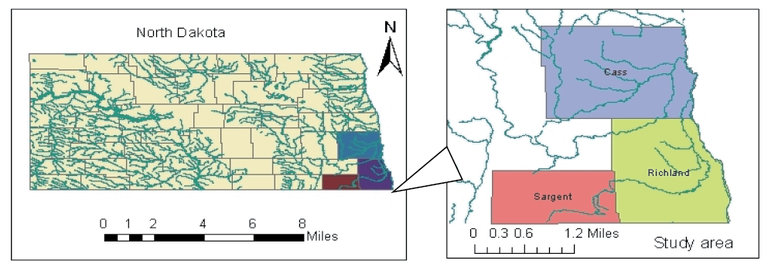
Figure 1. Locations of the study area (not to scale).
Results
A selection of the measured nutrients and solids in runoff from different feedlot pen surfaces are listed in Table 1. Knowledge of runoff quality from beef cattle feedlots would be useful to producers so they may adjust management practices to protect downstream water from nutrient pollution. Stakeholders or engineers also may find this information useful to design best management practices downstream from a feedlot pen to protect water quality.
Total phosphorus (TP) concentrations in runoff from different feedlots are presented in Table 1 and Figure 2. The average TP concentration ranged from 0.69 to 214.21, 14.31 to 117.19 and 5.97 to 36.06 mg/L for Feedlot C, Feedlot S and Feedlot R, respectively. According to Environmental Protection Agency Ecoregions V (North Dakota) recommendations, the maximum allowable TP concentration for the rivers and streams is 0.067 mg/L.
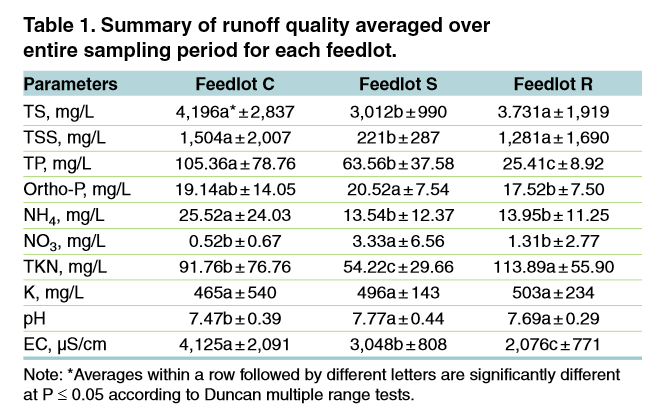
If runoff from these feedlots (Feedlot C and Feedlot S) reached a river or stream, TP concentration might exceed the EPA Ecoregions V recommendation or North Dakota's maximum limit criteria of Class I streams (0.1 mg/L). According to Chapter 33-16-02.1 of the North Dakota Century Code, the quality of Class I streams must be suitable for aquatic life, swimming, boating and other recreational uses, and it must meet the bacteriological, physical and chemical requirements of the Department of Municipal and Domestic Use.
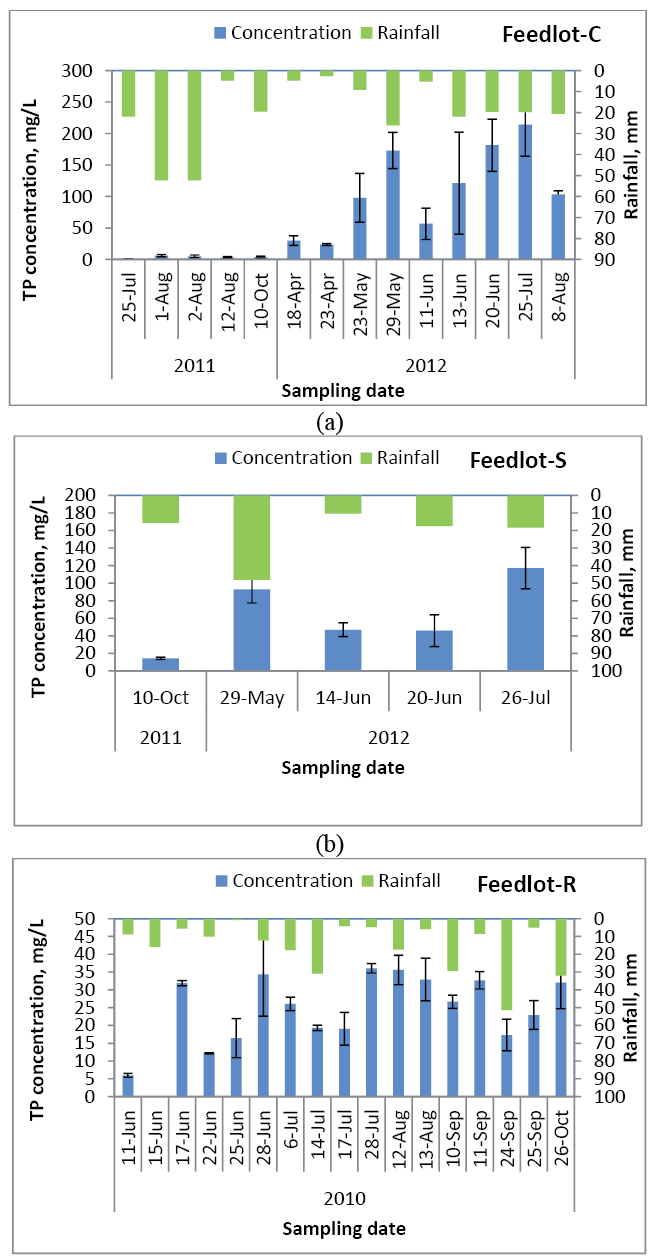
Figure 2. Total phosphorus (TP) concentrations in runoff from different feedlot pen surfaces during different sampling events. The error bar represents the standard deviation.
Trends of ortho-P concentration in runoff samples from different feedlots are presented in Figure 3. The average ortho-P concentration ranged from 0.36 to 36.0, 10.24 to 29.07 and 2.25 to 27.34 mg/L at Feedlot C, Feedlot S and Feedlot R, respectively. When Feedlot C was fully operational in 2012, the ortho-P concentration in feedlot runoff increased significantly. This concentration might have come from the previous year's nutrient accumulation.
The ortho-P fraction of TP in the runoff was less in Feedlot C (18.6 percent) compared with Feedlot S (32.2 percent) and Feedlot R (68.9 percent). The average ortho-P fraction of TP was highest in Feedlot R, meaning that Feedlot R had the highest soluble phosphorus, whereas Feedlot C had the highest particulate-bound P, followed by Feedlot S.
Particulate-bound P may be reduced from runoff using vegetative filter strips or by a settling basin, but minimizing the transport of soluble nutrients is difficult. A combination of treatments may be needed to reduce ortho-P from runoff. Allowable ortho-P in lakes and reservoirs in North Dakota is 0.02 mg/L. Runoff from feedlot pen surfaces potentially may increase the phosphorus concentration in downstream water.
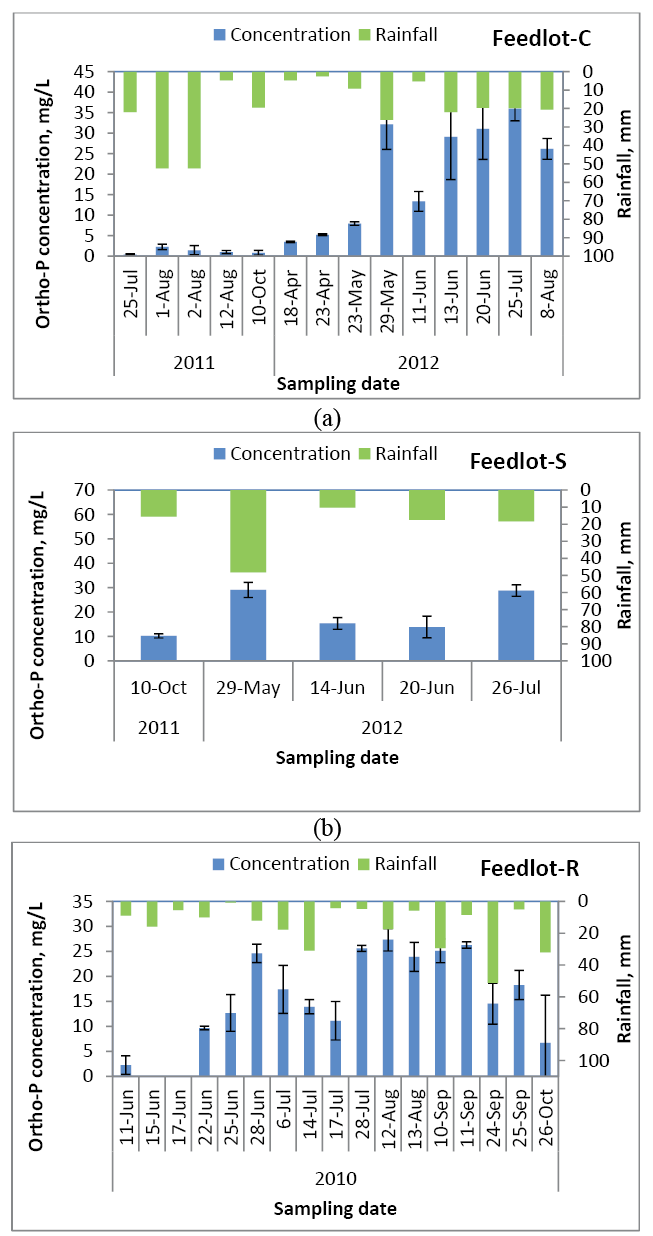
Figure 3. Total ortho-phosphorus (ortho-P) concentrations in runoff from different feedlot pen surfaces during different sampling events. Error bars represent the standard deviation.
Figures 4a, b and c show the average NH4-N concentrations during different sampling dates at Feedlot C, Feedlot S and Feedlot R, respectively. Concentrations of NH4-N in runoff at Feedlot C were lower in 2011 than in 2012 (Figure 4a). The same trend also was noticed for Feedlot S. NH4-N concentrations at Feedlot C, Feedlot S and Feedlot R ranged from 0.78 to 64.6, 1.21 to 29.83 and 1.10 to 47.93 mg/L, respectively.
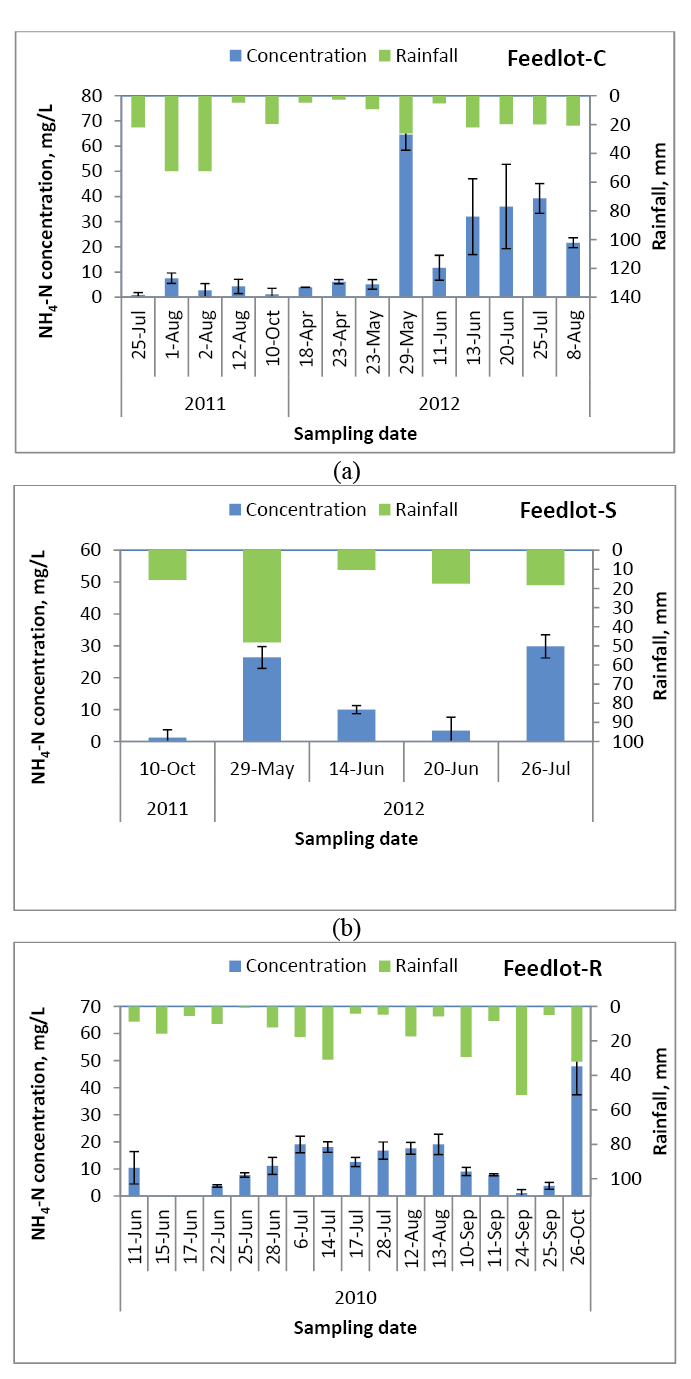
Figure 4. Total ammonium-N (NH4-N) concentrations in runoff from different feedlot pen surfaces during different sampling events. The error bar represents the standard deviation.
Figures 5a, b and c show the NO3-N trends during different sampling dates at Feedlot C, Feedlot S and Feedlot R, respectively. Comparatively, overall lower NO3-N concentration was observed at Feedlot C and Feedlot R versus Feedlot S. The NO3-N concentrations in runoff samples ranged from 0.04 to 6.16, 0 to 44.52 and 0 to 6.43 mg/L at Feedlot C, Feedlot S and Feedlot R, respectively.
Except at Feedlot S, NO3-N concentrations always were below the EPA minimum allowable effluent discharge concentration level of 10 mg/L but higher than the maximum limit criteria for Class I streams in North Dakota
(1.0 mg/L).
Similarly, these values are also higher than the allowable NO3-N in lakes and reservoirs in North Dakota (0.25 mg/L). If runoff water reached downstream, it could impact aquatic species and recreational uses. Also, water may be a source of toxic levels of nitrate for livestock, but safe levels of potentially toxic nitrate concentration in water for livestock is very high (500 mg/L).
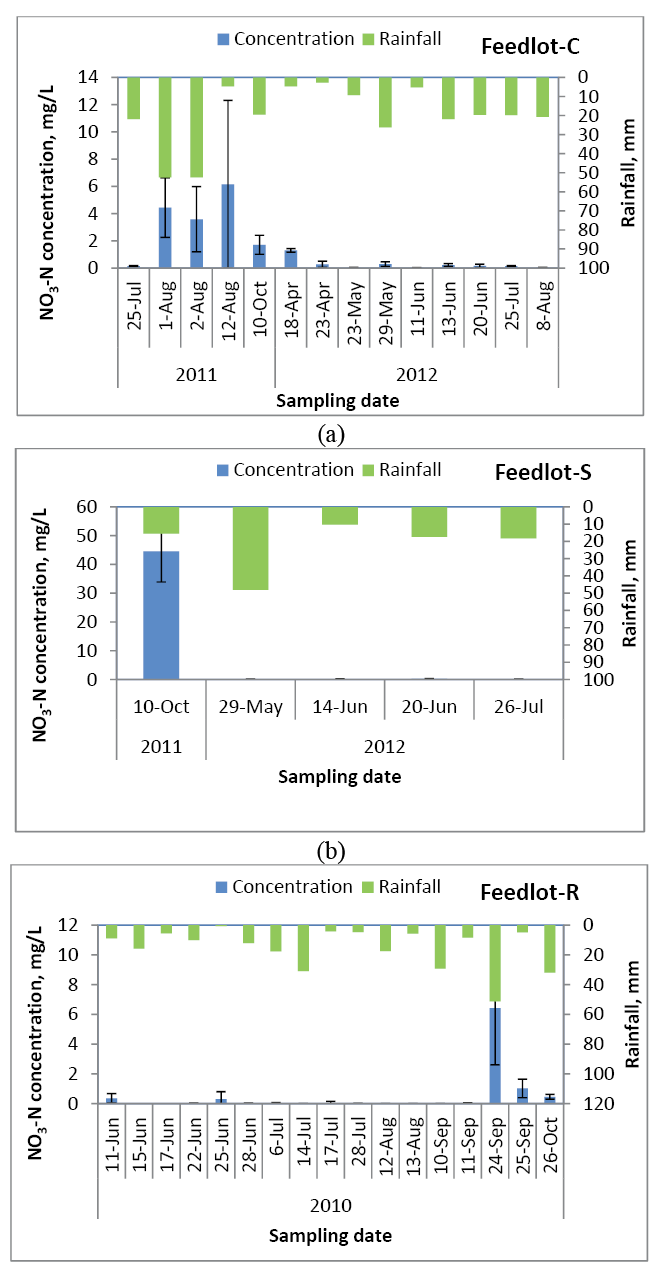
Figure 5. Total nitrate-N (NO3-N) concentrations in runoff from different feedlot pen surfaces during different sampling events. The error bar represents the standard deviation.
Average concentrations of total Kjeldahl nitrogen (TKN) during sampling events from Feedlot C, Feedlot S and Feedlot R are presented in Figure 6, and pooled overall concentrations are presented in Table 1.
Overall, TKN/TN ranged from 6.58 to 251, 10.95 to 80.79 and 7.95 to 209 mg/L for Feedlot C, Feedlot S and Feedlot R, respectively. According to the EPA Ecoregions V (North Dakota), the maximum allowable TN concentration for rivers and streams is 0.88 mg/L, and according to the North Dakota Class I stream criteria, the maximum allowable TN concentration is 1.0 mg/L.
If runoff from these feedlots (Feedlot C and Feedlot S) reached downstream, TN concentration might exceed the EPA Ecoregions V recommendation for the North Dakota maximum limit criteria of Class I streams. To reduce TKN/TN in runoff water, a vegetative filter strip or settling basin might be the best option because vegetative filters are effective in reducing TS, and TKN/TN is correlated with TS.
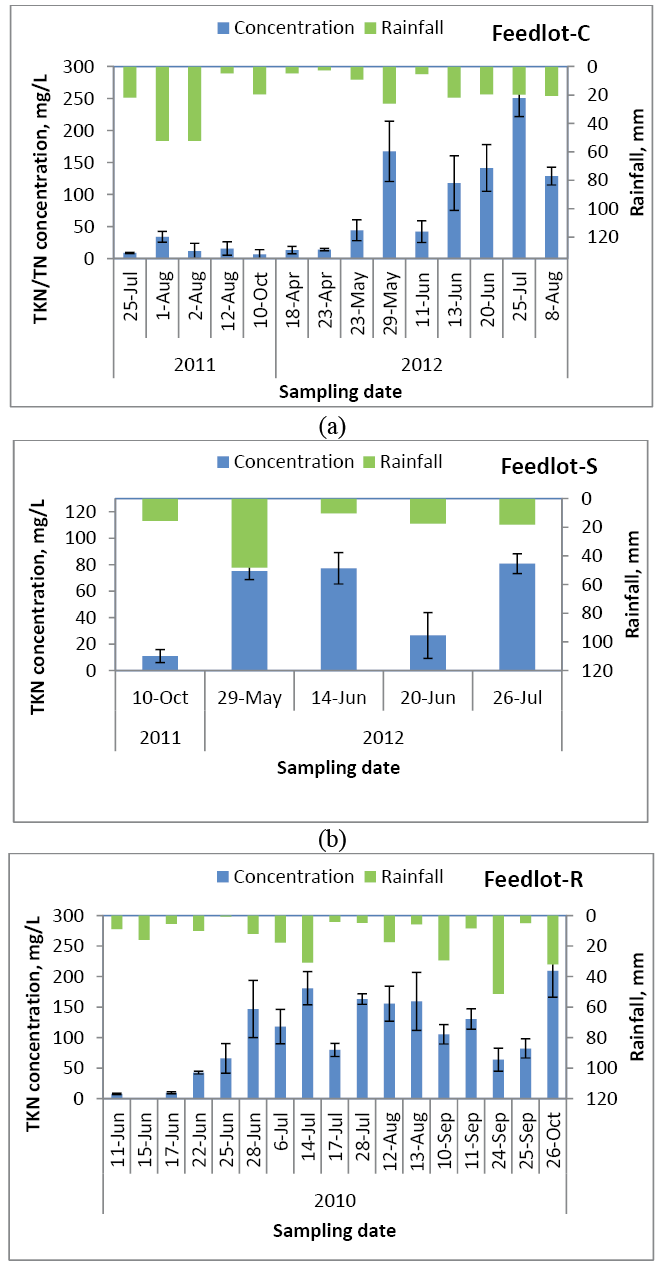
Figure 6. Total Kjeldahl nitrogen (TKN)/total nitrogen (TN) concentrations in runoff from different feedlot pen surfaces during different sampling events. The error bar represents the standard deviation. Total nitrogen was measured for samples collected in 2012.
Concentrations of K at different sampling events from Feedlot C, Feedlot S and Feedlot R are shown in Figures 7a, b and c, respectively. Potassium concentration in runoff at Feedlot C was very low in 2011 but was found very high in 2012 (Figure 7a). The large number of animals produced per feedlot increased the amount of manure, leading to a greater amount of nutrients available for transport by runoff, which may result in greater K value in Feedlot C.
Potassium concentration ranged from 12 to 2,246, 437 to 689 and 43 to 854 mg/L from Feedlot C, Feedlot-S and Feedlot R, respectively. Potassium transportation may increase with rainfall intensity and feedlot slope. The major concern using feedlot runoff for land application is the high concentrations of K, which may increase salinity in soil.
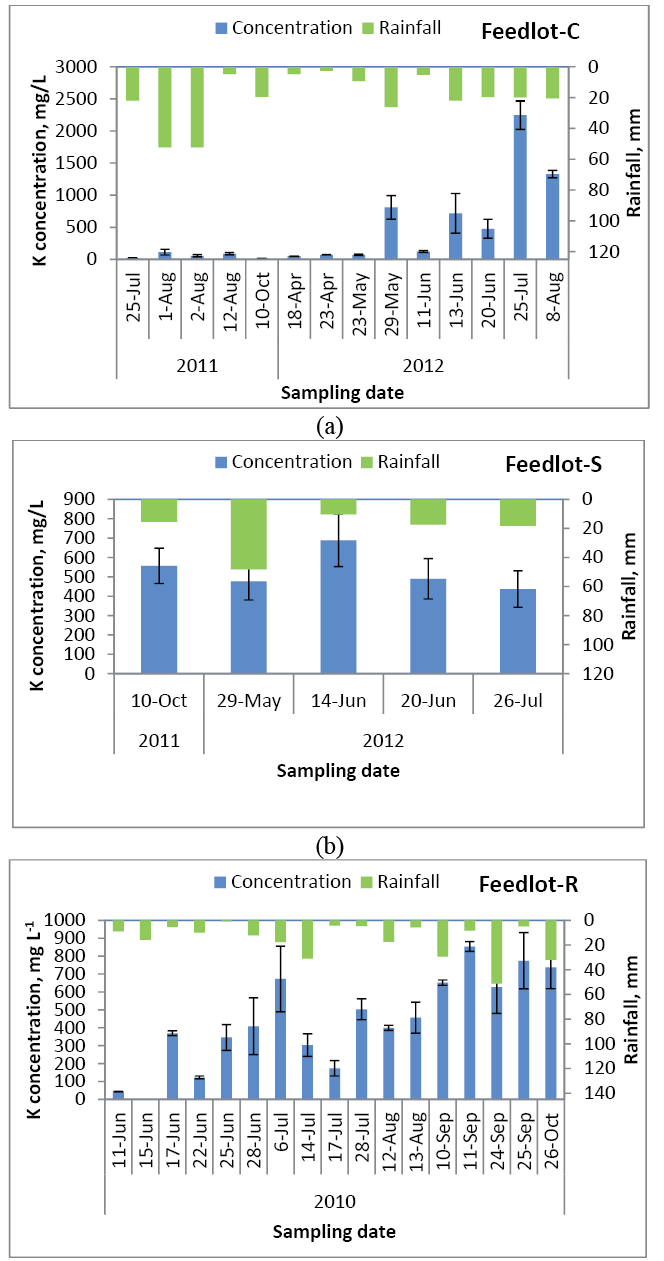
Figure 7. Total potassium (K) concentrations in runoff from different feedlot pen surfaces during different sampling events. The error bar represents the standard deviation.
Summary
Open cattle feedlots may contribute significant amounts of nutrients in runoff. If runoff from feedlots reaches downstream, it might exceed existing nutrient criteria for Class I streams and the surface water numeric standard in North Dakota. This may lower water quality and cause pollution issues.
Producers, engineers, Extension agents and policymakers may use this runoff quality information to design and implement acceptable technologies or management practice to control target nutrients from open beef cattle feedlot runoff.
Acknowledgement
This project was funded by the North Dakota Department of Health and EPA-ND section 319 (h). The authors also acknowledge the beef cattle feedlot owners for providing access to their facilities.
Further Reading and References
APHA. 2005. Standard Methods for the Examination of Water and Wastewater. 2nd ed. American Public Health Association, Washington, D.C.
North Dakota Century Code Chapter 33-16-02.1. Standards of quality for waters of the state .
Clark, R.N., C.B. Gilbertson and H.R. Duke. 1975. Quantity and quality of beef feedyard runoff in the Great Plains. p. 429-431. In: Managing Livestock Wastes. Proceedings of the Third International Symposium on Livestock Wastes. Proc-275, American Society of Agricultural Engineers, St. Joseph, Mo.
Dickey, E.C., and D.H. Vanderholm. 1981. Vegetative filter treatment of livestock feedlot runoff. Journal of Environmental Quality 10(3):279-284.
Hach. 2007. DR 2800 Spectrophotometer procedures manual (2nd ed.). Loveland, Colo.: Hach Co.
Johnson, R., and T. Scherer. 2012. Drinking Water Quality: Testing and Interpreting Your Results. NDSU Extension publication WQ1341.
Kissinger, W.F., R.K. Koelsch, G.E. Erickson and T.J. Klopfenstein. 2007. Characteristics of manure harvested from beef cattle feedlots. Applied Engineering in Agriculture 23(3):357-365.
Lardy, G., C. Stoltenow and R. Johnson. 2008. Livestock and Water. NDSU Extension publication AS-954 (revised).
Miller, J.J., B.P. Handerek, B.W. Beasley, E.C.S. Olson, L.J. Yanke, F.J. Larney, T.A. McAllister, B.M. Olson, L.B. Selinger, D.S. Chanasyk and P. Hasselback. 2004. Quantity and quality of runoff from a beef cattle feedlot in southern Alberta. J. Environ. Qual. 33(3):1088-1097.
North Dakota Agricultural Weather Network (NDWAN).
Pepple, L.M., D.S. Andersen, R.T. Burns and L.B. Moody. 2011. Physical and chemical properties of runoff effluent from beef feedlots in Iowa. Transactions of the ASABE 54(3):1079-1084.
Rahman, S., A. Rahman and R. Wiederholt. 2011. Vegetative filter strips reduce feedlot runoff pollutants. NDSU Extension publication NM1591.
U.S. Environmental Protection Agency. Region 9 Water Division. Tribal Water Pollution Control Program. 2011
U.S. Environmental Protection Agency. Region 9 Water Division. Tribal Water Pollution Control Program. 2011
Vaillant, G.C., G.M. Pierzynski, J.M. Ham and J. DeRouchey. 2009. Nutrient Accumulation below Cattle Feedlot Pens in Kansas. Journal of Environmental Quality 38(3):909-918.
Heavy Use Area Feeding Design Runoff Pdf
Source: https://www.ag.ndsu.edu/publications/environment-natural-resources/water-quality-of-runoff-from-beef-cattle-feedlots
0 Response to "Heavy Use Area Feeding Design Runoff Pdf"
Enregistrer un commentaire